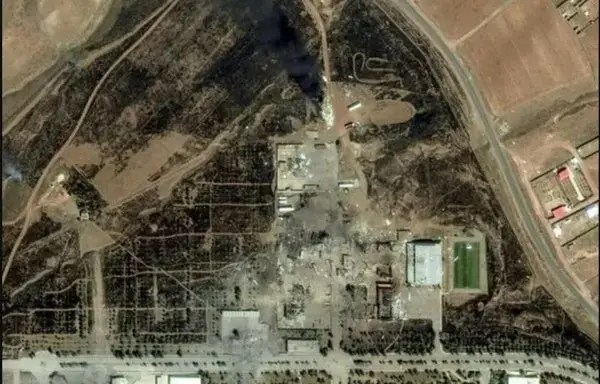Science Technology
Iranian regime weaponized AI to mask military defeats
Artificial intelligence was used to fabricate videos and images, covering up battlefield failures while maintaining an illusion of military success.
![A billboard depicting Iranian missiles is displayed in Tehran on April 20, 2024. [Atta Kenare/AFP]](/gc1/images/2025/07/17/51072-iran-missile-billboard-600_384.webp)
By Jana al-Masry |
The Iranian regime systematically deployed artificial intelligence technology to manufacture fake news, images and videos during its recent conflict with Israel, media and strategy experts said.
It used these disinformation tactics, also employed by its proxies, to conceal military defeats and prevent domestic unrest, they said, noting that AI-generated propaganda marks a new chapter in warfare media manipulation.
The latest deceptions came as Iranian regime officials struggled to justify massive defense expenditures that failed to deliver promised results.
Wars have always featured media battles, strategy expert Yahya Mohammed Ali told Al-Fassel, pointing out that the recent conflict is notable for the Iranian regime's widespread use of AI technology to fabricate news.

The regime's reliance on fabricated content confirmed it "was, without question, the losing side in the battle," he said.
In contrast to this type of deception, Ali said, Israel maintained its traditional approach of using official statements, satellite data and verifiable imagery.
The Iranian regime's disinformation campaign served to both conceal battlefield losses and justify enormous expenditures on missile and ballistic systems.
Showcased as symbols of Islamic Revolutionary Guard Corps (IRGC) power during decades of military parades, the cost of these weapons systems contributed to the country's crushing economic crisis, Ali said.
Spread of fake content
Journalist Mohammed al-Abdullah described the challenge of following accurate war coverage as Iranian platforms flooded digital spaces with fake content.
"Most of the news disseminated by Iranian news platforms, whether written, in pictures or on video sites, was completely fabricated," he told Al-Fassel.
Iranian operatives relied on AI-generated images and videos, supplemented by footage stolen from electronic war games featuring captured soldiers, destroyed aircraft and scenes of destruction, al-Abdullah said.
The deception campaign included manufacturing fake social media conversations and comments attached to fabricated posts, creating an illusion of widespread authentic engagement that amplified the disinformation's reach, he added.
Iran's internet restrictions and media blackout, combined with blocked social media access, enabled authorities to disseminate false narratives through state-controlled outlets without domestic contradiction, he explained.
This information control aimed to project the strength of the Iranian regime while preventing internal collapse over military losses, al-Abdullah said.
The emphasis on fabricated images of destruction inside Israel served to overshadow the massive real-life damage Iranian targets sustained, he said.
I like good information